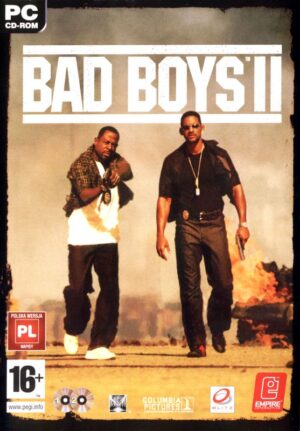Retro Replay Review
Gameplay
Tom Clancy’s Rainbow Six: Critical Hour brings tactical shooters back to their roots by placing you in the boots of Ding Chavez, leader of an elite commando squad on high-stakes black-ops missions. The core single-player campaign reimagines seven fan-favorite missions from the original Rainbow Six and Rogue Spear titles, now rebuilt with modern technology to sharpen every breach, flashbang, and silent takedown. This throwback design emphasizes planning and precision: one wrong move can spell disaster, and friendly fire is always a risk you must consider.
Critical Hour’s level design blends close-quarters building interiors with sprawling outdoor compounds, forcing you to adapt your approach—whether you prefer stealthy entry through side windows or a full-frontal assault backed by grenades and suppressive fire. Before each op, you can customize your team’s loadout, selecting weapons, gadgets, and armor that suit your style. The persistent elite creation mode from Rainbow Six: Lockdown returns as well, allowing you to develop and upgrade a signature operator who sticks with you through both single-player and multiplayer skirmishes.
Multiplayer is split-screen ready and fully integrates online play for up to 16 combatants over Xbox Live, giving you a suite of eight classic and new modes. From cooperative Terrorist Hunt to all-out Team Survival and the inventive Assassin mode, there’s a challenge for every type of squad. Free-for-All Sharpshooter and Survival modes debut here too, rewarding pinpoint accuracy and rock-solid reflexes. Whether you’re coordinating with friends or facing off against strangers, Critical Hour keeps each firefight tense, tactical, and deeply rewarding.
Graphics
Visually, Critical Hour is a marked improvement over its predecessors, with updated textures, dynamic lighting, and more detailed character models that bring each mission to life. Shadow-casting foliage and flickering corridor lights add atmosphere to stealth sequences, while muzzle flashes and smoke effects heighten the intensity of full-bore assaults. On consoles, frame rates remain relatively stable even in chaotic firefights, ensuring that split-second decisions aren’t compromised by sluggish performance.
The environments themselves feel grounded and realistic, from the dusty halls of derelict warehouses to the sleek hallways of high-security facilities. Weather effects—such as drifting rain or swirling sandstorms—are more than visual flourishes; they can obscure sightlines and add an extra tactical consideration to every operation. While cutscenes are serviceable rather than cinematic, in-game voiceovers and mission briefings are delivered crisply, helping to maintain immersion without interrupting the flow of action.
Weapon animations have received a welcome polish, with smoother reloads and realistic recoil patterns that lend authenticity to each shot. UI elements are minimalistic yet informative, providing team waypoints and enemy indicators only when your intel gear picks up suspicious activity. Overall, the graphical enhancements don’t just dress up old content—they reinforce the methodical, high-risk nature of Rainbow Six play and make every breach feel weighty.
Story
While Rainbow Six games are never narrative epics in the vein of story-driven RPGs, Critical Hour stitches together a coherent thread through its revamped missions. You step into Ding Chavez’s shoes as he leads Rainbow on a global counterterrorism campaign, revisiting crises that once captivated the franchise’s earliest fans. Each mission briefing outlines your objective succinctly—rescue hostages, defuse bombs, or eliminate high-value targets—while maintaining a sense of urgency as events unfold in real time.
The dialogue between Chavez and his subordinates is functional yet engaging, revealing glimmers of camaraderie under pressure. Though the game doesn’t strive for emotional depth, it succeeds in giving your actions a clear purpose: innocent lives hang in the balance, and failure is not an option. Remastered cutscenes fill in connective tissue, ensuring that revisiting old missions doesn’t feel like a simple nostalgia trip but rather a revitalized campaign with contemporary stakes.
Subplots from Rogue Spear and early Rainbow Six entries get subtle nods, rewarding longtime fans who recognize key characters and scenarios. At the same time, newcomers can jump straight in without feeling lost—Critical Hour stands on its own as a concise, mission-focused thriller. By balancing old lore with modern pacing, the game offers a tight, satisfying arc that keeps you invested across all seven stages.
Overall Experience
Tom Clancy’s Rainbow Six: Critical Hour is a triumphant return to the franchise’s tactical foundations. Its fusion of classic mission design with contemporary graphical and technical improvements results in an experience that is both familiar and fresh. If you’ve ever felt that modern shooters have leaned too heavily on run-and-gun mechanics, this title offers a refreshing antidote, rewarding patience, teamwork, and strategic thinking.
The robust multiplayer suite extends the game’s lifespan far beyond the single-player campaign, with split-screen couch co-op and a variety of online modes catering to both competitive and cooperative tastes. Persistent elite creation ensures that your custom operator grows alongside your skills, unlocking new weapons and gadgets to keep every match engaging. The inclusion of new modes—like Free-for-All Sharpshooter and Assassin—adds replay value and encourages diverse playstyles.
Ultimately, Critical Hour shines when you embrace its deliberate pacing and high-stakes encounters. It may not reinvent the wheel, but by refining and modernizing the series’ most beloved missions, it delivers a cohesive and challenging package. Whether you’re a Rainbow Six veteran longing for the old days or a tactical shooter newcomer seeking a rigorous test, Critical Hour stands as a must-play entry that proves precision and planning can still dominate the battlefield.
 Retro Replay Retro Replay gaming reviews, news, emulation, geek stuff and more!
Retro Replay Retro Replay gaming reviews, news, emulation, geek stuff and more!




Reviews
There are no reviews yet.